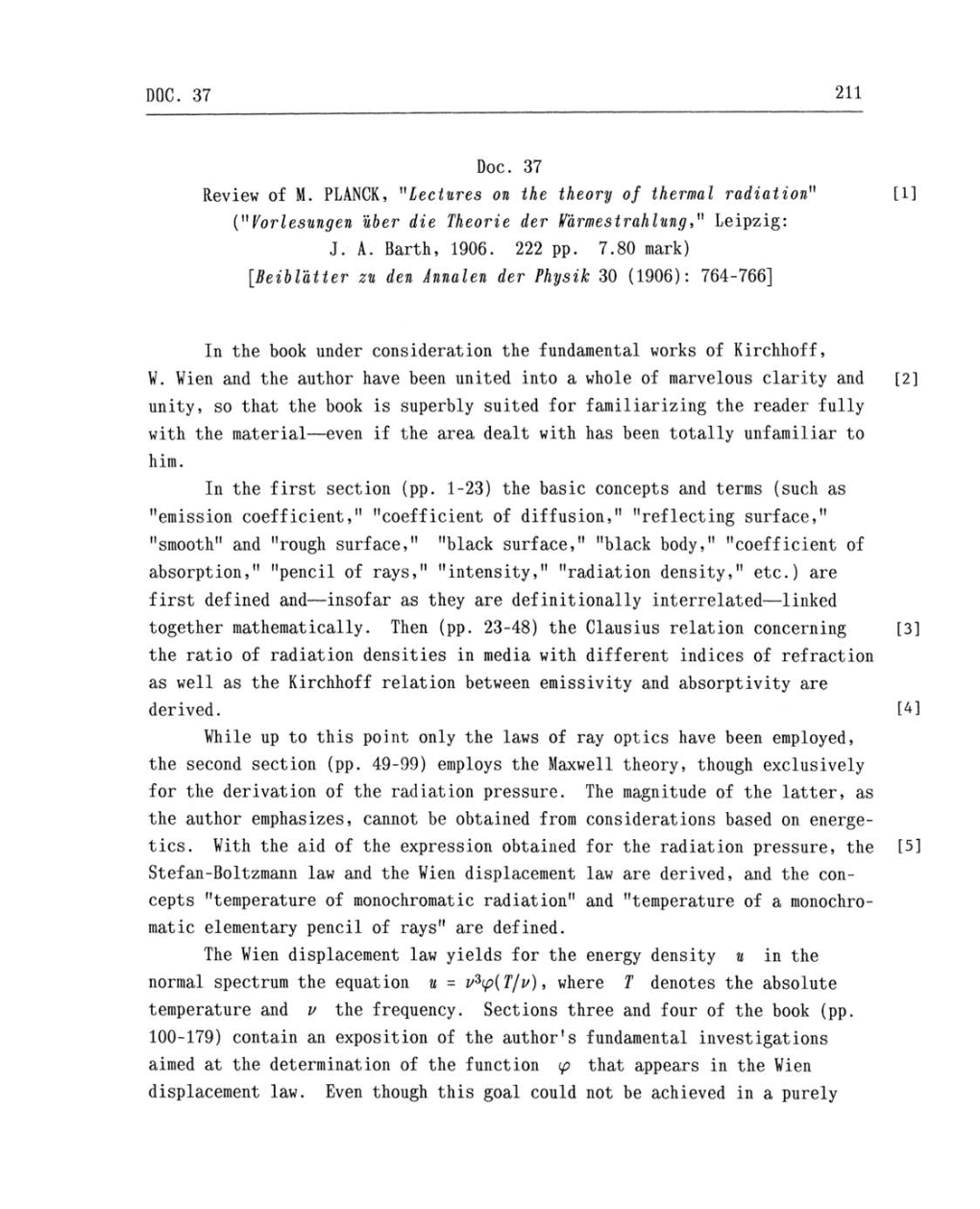DOC.
37
211
Doc. 37
Review
of
M.
PLANCK,
"Lectures
on
the
theory of
thermal
radiation"
("Vorlesungen
über die Theorie der
Warmestrahlung,"
Leipzig:
J.
A.
Barth, 1906.
222
pp.
7.80
mark)
[Beiblätter
zu
den
Annalen
der
Physik
30 (1906):
764-766]
[1]
In the
book
under consideration the fundamental
works of Kirchhoff,
W.
Wien
and
the
author
have been
united into
a
whole of marvelous
clarity
and
[2]
unity,
so
that the
book
is
superbly
suited for familiarizing the reader
fully
with the material-even if the
area
dealt with
has been
totally
unfamiliar
to
him.
In
the first section
(pp.
1-23)
the basic
concepts and terms (such
as
"emission
coefficient,"
"coefficient
of diffusion," "reflecting surface,"
"smooth" and
"rough
surface,"
"black
surface,"
"black
body,"
"coefficient
of
absorption,"
"pencil
of
rays,"
"intensity,"
"radiation
density,"
etc.)
are
first defined and-insofar
as
they
are
definitionally
interrelated-linked
together mathematically. Then
(pp. 23-48)
the
Clausius relation
concerning [3]
the ratio of radiation densities
in
media
with different indices
of
refraction
as
well
as
the Kirchhoff relation
between emissivity and absorptivity
are
derived.
[4]
While
up
to
this
point only
the
laws of
ray
optics
have been
employed,
the
second
section
(pp. 49-99) employs
the
Maxwell
theory,
though
exclusively
for the derivation of the radiation
pressure. The
magnitude
of
the latter,
as
the author
emphasizes, cannot
be
obtained
from
considerations based
on
energe-
tics.
With
the aid of the
expression
obtained for the radiation
pressure,
the
[5]
Stefan-Boltzmann
law
and the
Wien
displacement
law
are
derived, and
the
con-
cepts "temperature
of
monochromatic
radiation"
and
"temperature
of
a
monochro-
matic
elementary
pencil
of rays"
are
defined.
The Wien
displacement
law
yields
for the
energy
density
u
in
the
normal
spectrum
the
equation
u
=
v3q(T/v),
where
T
denotes the
absolute
temperature and
v
the
frequency.
Sections three
and
four
of
the
book
(pp.
100-179)
contain
an
exposition of
the author's
fundamental
investigations
aimed
at
the determination of the function
q
that
appears
in the
Wien
displacement
law.
Even
though
this
goal
could
not be
achieved
in
a
purely
